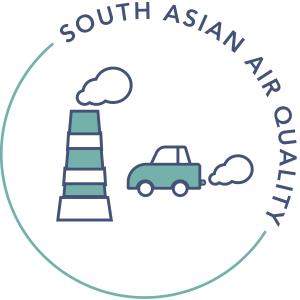High levels of air pollution harm the health of over 1.8 billion people in South Asia.

South Asian Air Quality
We are working to improve health by reducing air pollution in South Asia.
South Asia — and in particular the Indo-Gangetic Plain that covers parts or all of India, Pakistan, Bangladesh, and Nepal — experiences some of the world’s highest population-weighted levels of air pollution. (Health Effects Institute, “State of Global Air 2020”, Figure 3, pg. 7)
While the evidence is imperfect (being highly reliant on observational studies), we are highly confident that air pollution can result in significant negative health effects, such as chronic respiratory and cardiovascular diseases that reduce life expectancy.
Of the pollutants present in South Asia’s air, we focus on PM2.5 — particulate matter no larger than 2.5 micrometers in diameter — which we understand to be associated with the greatest health costs.

Indian population (2011) by local particulate matter pollution (2016) compared with WHO and Indian National Air Quality Standards.
Data is taken from the SHRUG. Surface PM 2.5 (2016) is estimated by combining Aerosol Optical Depth retrievals from the NASA MODIS, MISR, and SeaWIFS instruments with the GEOS-Chem chemical. transport model. See Van Donkelaar, Aaron, Melanie S. Hammer, Liam Bindle, Michael Brauer, Jeffery R. Brook, Michael J. Garay, N. Christina Hsu et al. “Monthly global estimates of fine particulate matter and their uncertainty.” Population data (2011) is matched by subdistrict from Office of the Registrar General and Census Commissioner, India. “Census of India.” (1991, 2001, 2011).
In our initial cause area investigation, we identified a number of activities that could significantly improve South Asia’s air pollution levels, including:
- Implementing more widespread and accurate air quality monitoring programs
- Conducting research to better understand the sources and effects of air pollution in the region
- Increasing the salience of air quality among stakeholders
We believe that supporting these activities, and potentially others, could help to inform the design, implementation, and enforcement of more effective air pollution abatement policies.
Our current grantmaking is focused on supporting those activities through three main strategies:
- Governance support (helping governments to develop and implement specific action plans at the local and regional “airshed” levels)
- Developing a better understanding of the problem (e.g. measurement, modeling, cost-benefit analyses)
- Addressing specific sources of air pollution (e.g. industrial, agricultural waste burning)

Low-cost air quality monitors undergoing calibration before field deployment (IIT Kanpur).
Since we launched the South Asian Air Quality program in 2022, our funding has focused on India. We hope to expand beyond India and into more specific sources of air pollution in the future.
The following Open Philanthropy staff oversee the South Asian Air Quality program.
South Asian Air Quality, at a glance
-
33 Grants
Made -
$20+ Million
Given
